
First: Break up with soda
An astounding 184,000 adult deaths worldwide each year are linked to the consumption of sugary drinks, according to research published conducted at Tufts University and published in the journal Circulation. This includes 133,000 deaths from diabetes and 45,000 deaths from cardiovascular disease. Harvard researchers, who have been studying more than 40,000 physicians and 88,000 nurses for more than two decades, found that women who consumed more than two servings of a sugary beverage a day were 40 percent more likely to develop heart disease than women who drank fewer. Men who drank the most sodas were 20 percent more likely to have a heart attack than those who drank the least.
Power Rx: Give up soda. If you drink several a day, start by swapping one for iced tea. Or water down a soda by mixing half a glass with seltzer. Over time, drink less and less soda until you get to zero. Try to give up the other worst foods for your heart while you’re at it.
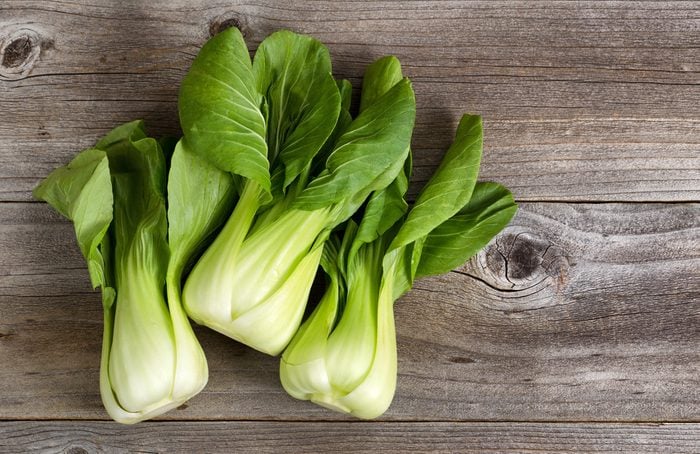
Fruits and vegetables
Nearly everything you can buy in the produce section of your grocery store is true medicine to the body. Plant foods are rich in vitamins, minerals, fiber, and phytonutrients, all of which are good for the heart. Asparagus, bell peppers, and bok choy, for example, are rich sources of B vitamins, especially vitamin B6, which helps lower homocysteine (an amino acid linked to heart disease) and C-reactive protein (a marker of inflammation). Carrots and tomatoes, as well as oranges and bananas, are rich in carotenoids including lycopene, an important antioxidant. It’s no wonder that the Harvard Nurses’ Health Study and Health Professionals Follow-Up Study found that people who ate eight or more servings of fruits and vegetables a day were 30 percent less likely to have a heart attack or stroke than people who consumed one and a half servings or fewer.
Power Rx: Eat one more serving of fruits and vegetables than you had yesterday, and keep this up for a week. Next week, add another serving. Keep doing this until you’ve surpassed five. Ideally, keep going until you hit between eight and 12 servings. And don’t miss these silent signs you might have clogged arteries.
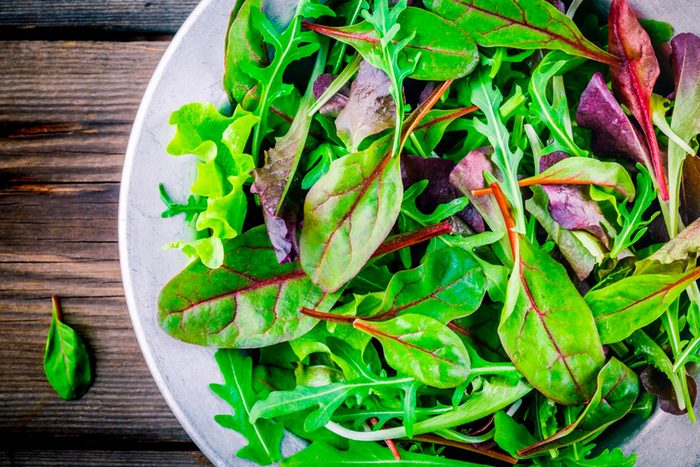
Leafy greens
Arugula, lettuce, beets, kale, spinach, and some other veggies are all rich sources of nitrates, a form of nitrogen they absorb from the soil. During digestion, that compound is converted into an important gas: nitric oxide, which causes arteries to resist contraction, plaque, and blood coagulation to reduce the risk of strokes and heart attacks. Researchers at Queen Mary University of London found that those who consumed a nitrate-rich meal—such as a bowl of lettuce—experienced an 11.2-mmHg drop in blood pressure within a few hours, a reduction that lasted all day long. This important improvement in blood pressure rivals widely prescribed drugs.
Power Rx: Add greens to soups, sandwiches, smoothies, and whatever else you can think of, or try a glass of beet juice every day.
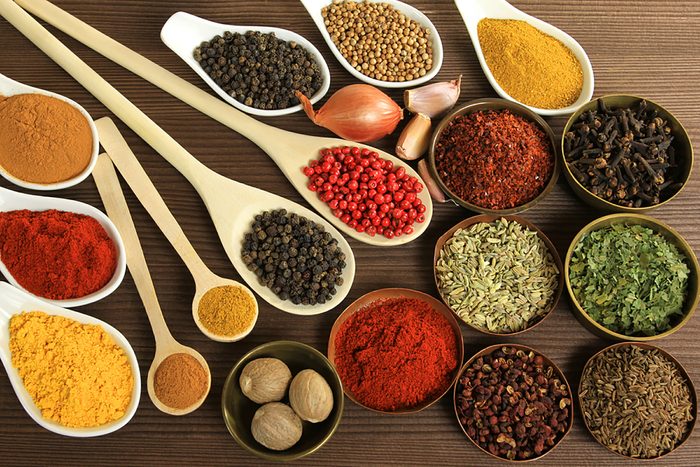
Spices and herbs
One of the easiest ways to protect your heart is also the tastiest. Many herbs and spices are concentrated from plants, so they contain the same protective chemicals that plants use to ward off pests and disease. When we consume these chemicals from spices, they protect the cells in our body from disease too. The allium in garlic, for example, has been shown to improve blood cholesterol, reduce blood pressure, and lower the risk of developing heart disease. Turmeric is rich in curcumin, which has been shown to reduce cholesterol, triglycerides, and blood sugar. Ginger is a natural anti-inflammatory herb that has been shown to thin the blood. Cinnamon may improve blood flow and help normalize blood sugar.
Power Rx: Sprinkle apple pie spice (which contains cinnamon, cloves, allspice, and nutmeg) on fruit, oatmeal, and even your morning cup of joe. Add Italian seasoning mix to salads, soups, and potatoes and other side dishes. And test yourself: These are the 5 heart disease risk factors you might not know.
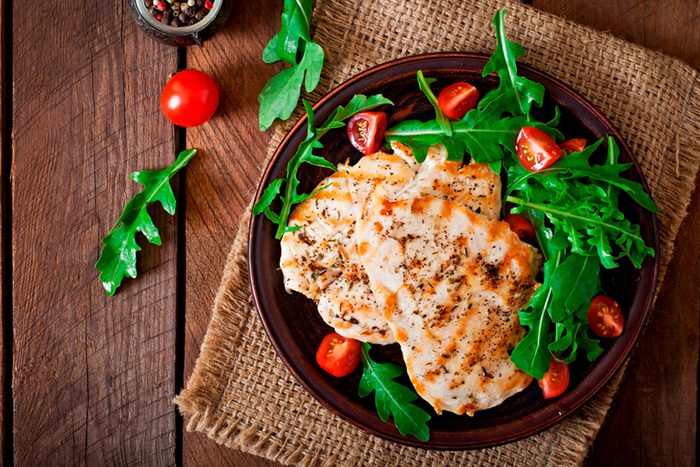
Meat that’s as “naked” as possible
Make sure the meat you do eat is as naked as possible—meaning that contains no antibiotics, hormones, sodium, artificial colors, nitrites, pesticides, or hidden additives. If you buy meat at the supermarket, look for labels like “hormone and antibiotic-free.” Also smart: choosing meat that comes from animals that ate grass or other natural food sources instead of grain from a feedlot. Meat from grass-fed animals has more healthy omega-3 fatty acids.
Power Rx: Always consume vegetables or fruit with any type of meat. The healing plant chemicals might buffer some of the harmful effects of meat. Make the vegetables and fruits the biggest portion of your dinner plate, and consider meat the garnish.
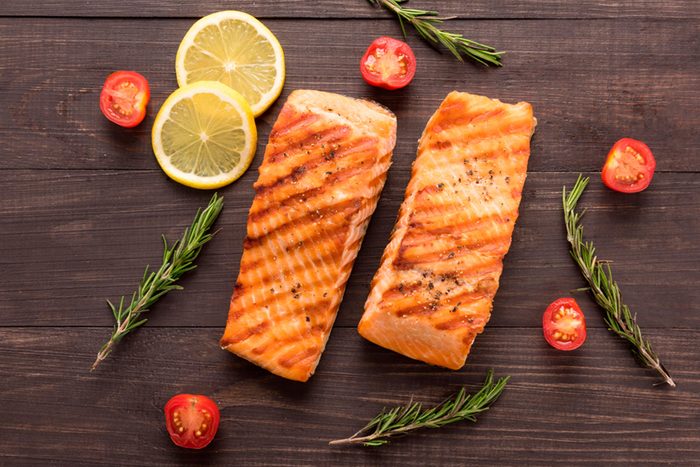
SMASH fish
Certain types of fish account for your richest source of omega-3 fatty acids, which are known to reduce inflammation, heart rhythm disturbances, triglyceride levels, and blood pressure. Diets rich in this fat might prevent plaque from building up in your arteries. These fish are easy to remember with this SMASH acronym: sardines, mackerel, anchovies, salmon, and herring.
Power Rx: Stick to eating fish twice a week, and avoid large fish like swordfish that have a high concentration of mercury. Don’t miss these other 22 foods that can help unclog your arteries.
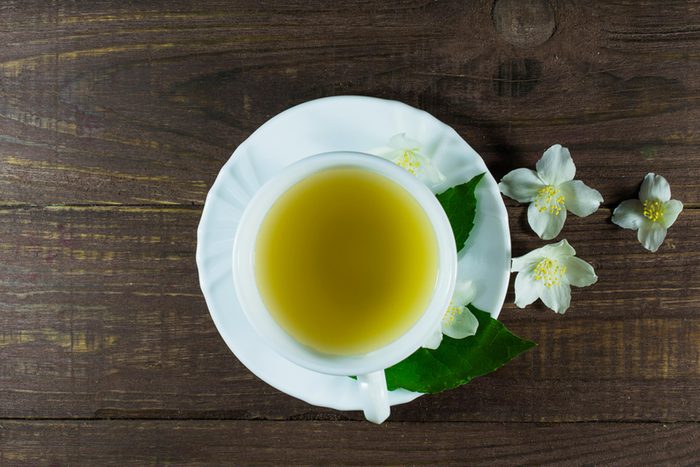
Tea
This beverage is a rich source of plant substances called flavonoids that help neutralize oxidation in the body. Research has shown that particular flavonoids in green tea, called catechins, protect our cells much like a premium gas additive keeps your car engine humming. Black, green, and oolong teas all halt heart disease in several ways, including blocking dietary cholesterol from being absorbed into the bloodstream, regulating levels of blood sugar, and soothing inflammation. Don’t miss these foods that make inflammation worse.
Power Rx: Drink one more cup daily than you already do. (If you don’t sip any, start with one cup). Aim for three cups a day—one with each meal. Let it steep for three to five minutes to boost the amount of catechins in the tea.
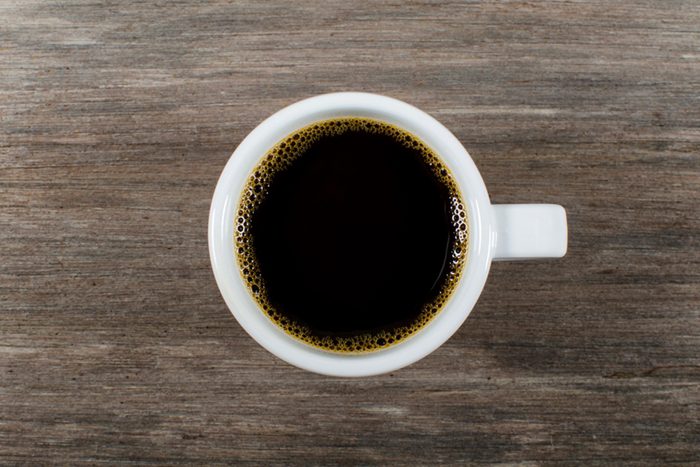
Coffee (in moderation)
For many years, people at risk of developing heart disease were told to avoid coffee. But without cream and artificial sweeteners, coffee is surprisingly healthy for most people. And despite the caffeine it contains, a cup of dark roasted java may actually lower blood pressure rather than raise it. (Of course, if coffee gives you racing heartbeats or jitteriness, listen to your body and skip it.) A study published in the Journal of the American Heart Association found that drinking three cups of coffee a day could lower the risk of clogged arteries.
Power Rx: Enjoy your java, but limit it to reasonable amounts—the American Council of Science and Health reports three to four cups of coffee a day provide the most health benefits.
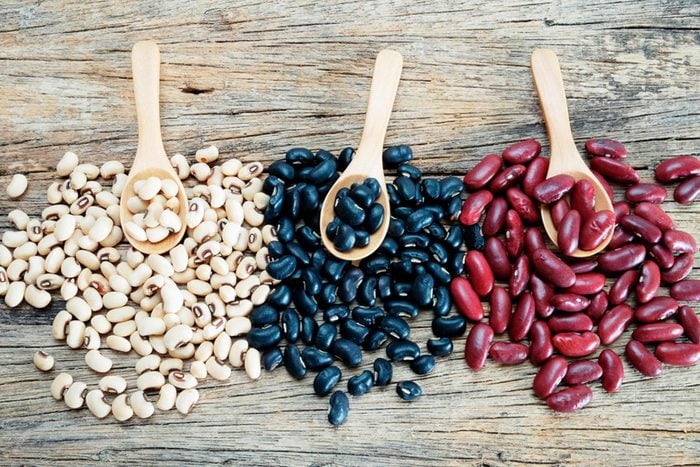
Fiber-rich foods
Soluble fiber—found in whole grains, oats, beans, lentils, and vegetables—can reduce the absorption of cholesterol into your bloodstream, according to the Mayo Clinic. According to the American Heart Association, eating high-fiber foods helps control blood sugar and blood cholesterol. One meta-analysis in the Canadian Medical Association Journal found that eating one serving of beans daily can lower “bad” LDL cholesterol by 5 percent. Find out more about why fiber is so good for us.
Power Rx: Think more beans, less meat. Start by replacing one meat-based meal per week with a bean-heavy meal, and work your way toward eating beans every day.
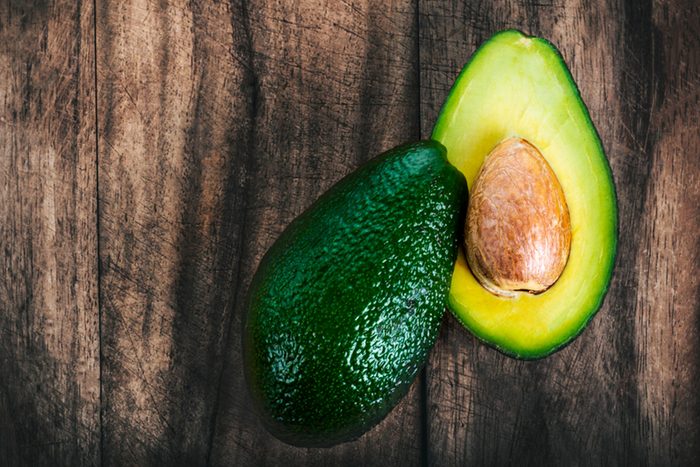
Unsaturated fats
Avocados, olives, and nuts are a few nutritional options to add to your menu if you want to avoid clogged arteries. That’s because these foods contain healthy unsaturated fats—which, unlike saturated fats, have protective properties for your heart. Avocados and nuts have specifically been linked to a reduction in LDL cholesterol, according to the Heart Foundation. On the flip side, these are the worst foods for lowering cholesterol.
Power Rx: When you need a snack, spread a couple of tablespoons of almond butter or a third of an avocado on high-fiber crackers. Unlike a sleeve of Ritz, this one-two punch of healthy fats and fiber will actually fill you up while keeping your arteries happy. Next, check out these 45 other things cardiologists do to protect their own hearts.
